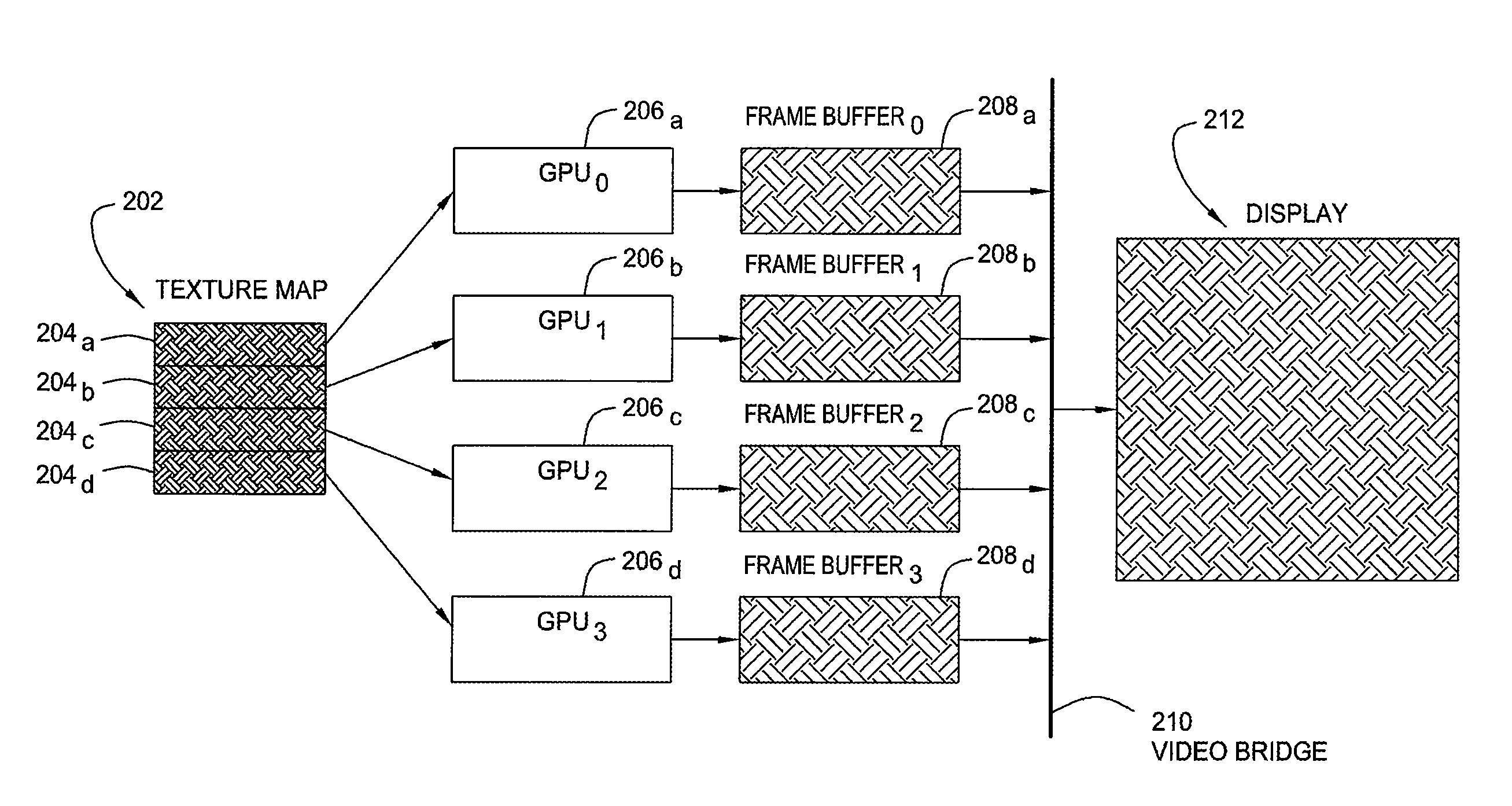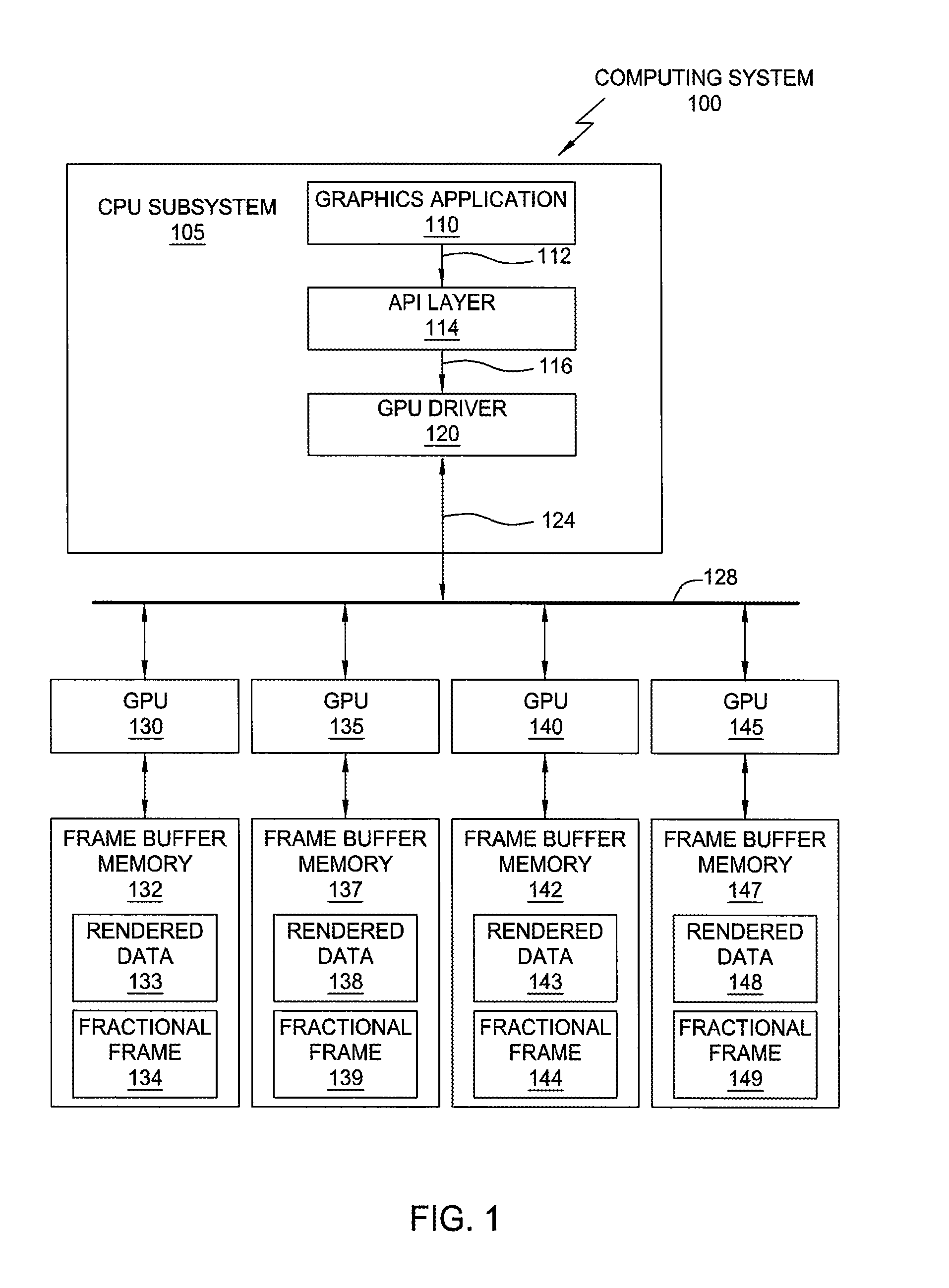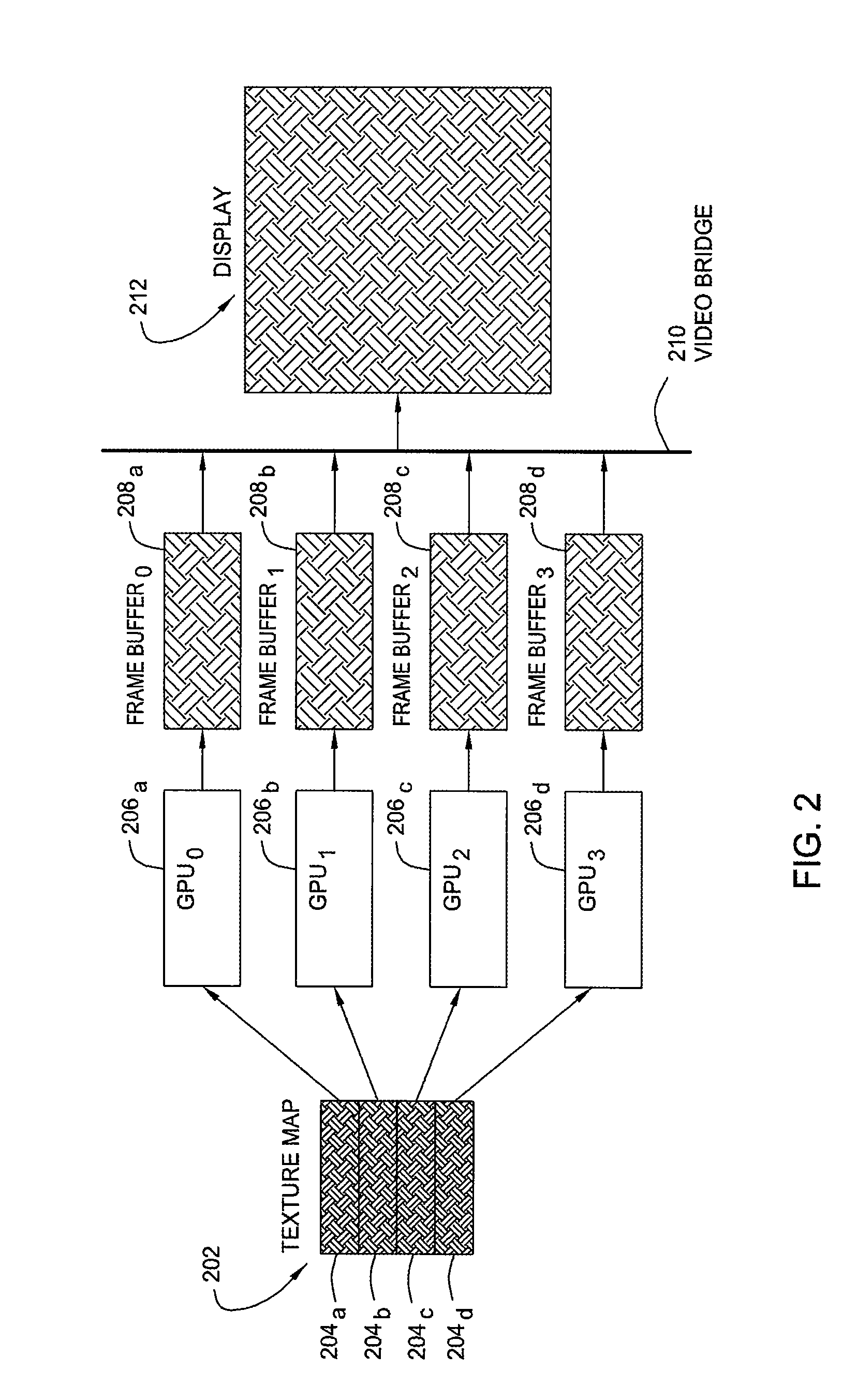Distributed rendering of texture data
a texture data and texture technology, applied in the field of graphics processing, can solve the problems of limiting the overall system performance, affecting the overall rendering performance, and the graphics application cannot inform the gpus of the spatial locality of the processed image data
- Summary
- Abstract
- Description
- Claims
- Application Information
AI Technical Summary
Benefits of technology
Problems solved by technology
Method used
Image
Examples
Embodiment Construction
[0016]Embodiments of the present invention provide techniques (and corresponding apparatus) for distributing the workload of rendering an image where texture mapping is involved among multiple graphics processing units (GPUs). The techniques generally entail dividing a texture map among multiple GPUs, performing texture mapping in each GPU to render image data in each GPU's frame buffer, combining the image data from each frame buffer, and scanning out the combined image to a display.
An Exemplary Multi-GPU System
[0017]FIG. 1 is a conceptual diagram of a multi-GPU computing system 100 that may be used for performing distributed rendering of texture data according to one embodiment of the invention. The system 100 may include a central processing unit (CPU) subsystem 105 and two or more GPUs (four are shown) 130, 135, 140, 145. The CPU subsystem 105 may include the necessary well-known hardware and software elements to support a typical software application environment. A graphics app...
PUM
 Login to View More
Login to View More Abstract
Description
Claims
Application Information
 Login to View More
Login to View More - R&D
- Intellectual Property
- Life Sciences
- Materials
- Tech Scout
- Unparalleled Data Quality
- Higher Quality Content
- 60% Fewer Hallucinations
Browse by: Latest US Patents, China's latest patents, Technical Efficacy Thesaurus, Application Domain, Technology Topic, Popular Technical Reports.
© 2025 PatSnap. All rights reserved.Legal|Privacy policy|Modern Slavery Act Transparency Statement|Sitemap|About US| Contact US: help@patsnap.com



